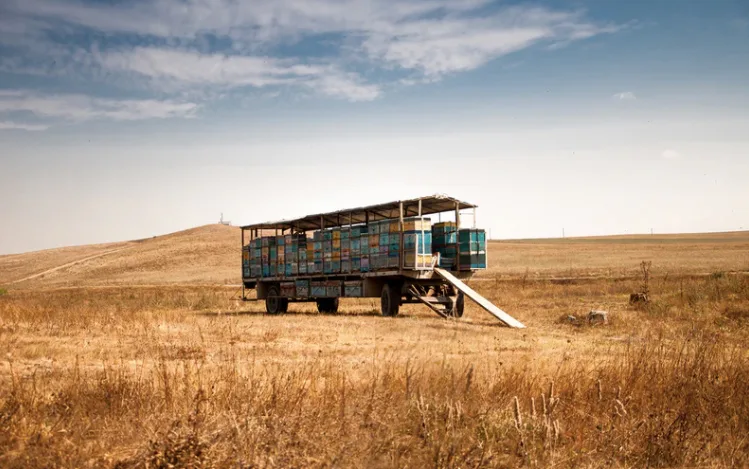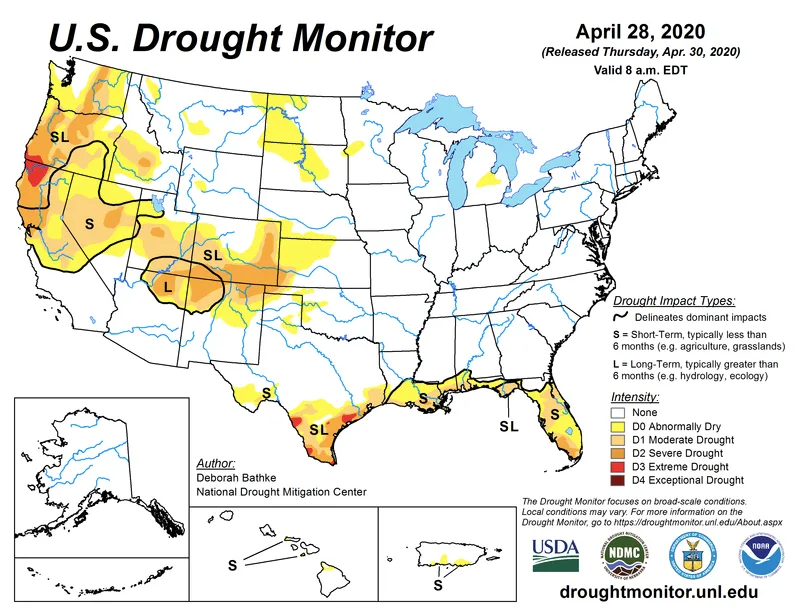
Southwestern U.S. is entering a rare megadrought, study says
The increasingly likelihood of facing unprecedented water shortages is raising concerns amongst residents and farmers in the American Southwest.
Droughts are normal features of some regional climates in the United States, particularly in southwestern regions where wet and dry seasons can see extreme fluctuations. However, a new study finds that the 20-year dry spell in the Southwest is becoming one of the most severe megadroughts that the region has seen in over 1,200 years.
The study defines megadroughts as “multi-decade drought events that contained periods of very high sensitivity and lasted longer than any event observed in the 19th or 20th centuries.” The Southwest has been abnormally dry and warm over the past two decades and the four-year period between fall 2011 and fall 2015 was the driest since record-keeping began in 1895.
The abnormally dry conditions are raising serious concerns amongst residents and the agricultural industry as unprecedented water shortages are becoming increasingly likely. In an interview with Time USA, A. Park Williams, the study’s lead author and a bioclimatologist at Columbia University, says that what’s happening now is “a drought bigger than what modern society has seen.”
Agriculture is one of the biggest economic sectors in California and the industry relies on irrigation, which accounts for roughly 80 per cent of the state’s human water use. California produces two-thirds of the fruits and nuts grown in the U.S. and more than one-third of its vegetables, so water shortages in this state are felt by the entire country and other nations that import these crops.
Record low rainfall and record high temperatures between 2012 to 2016 cost California approximately $3.8 billion USD and nearly 30,000 farmers lost their jobs. Droughts have a ripple effect on other jobs including planting, harvesting, forestry, and conservation officials. While government intervention has helped manage previous drought conditions, the current megadrought will require extensive intervention and cooperation from both residents and the agricultural industry to minimize the impacts on daily life as well as to protect the environment and businesses.

Widespread drought conditions across California, Nevada, Utah, Colorado, New Mexico and Arizona as of April 28, 2020. Sources: National Drought Mitigation Center (NDMC), the U.S. Department of Agriculture (USDA) and the National Oceanic and Atmospheric Administration (NOAA)
HOW PAST CLIMATES ARE RECONSTRUCTED
The researchers were able to reconstruct the climate in the Southwest back to 800 CE by studying local tree rings. Since modern technology has only been able to record climate data for less than 150 years, alternate sources of environmental information are used to learn more about past climates.
Tree rings, which are visible on tree stumps, indicate what the weather was like during each year. Wide tree rings indicate ideal conditions including ample warmth and moisture had occurred that year, while thinner rings suggest the tree experienced stressful weather conditions, such as abnormally dry conditions. Researchers can compare tree ring patterns to the greenhouse gas emissions that have been released by humans to explore how anthropogenic activity impacts natural drought cycles.
HISTORY OF MEGADROUGHTS
The southwestern U.S. has experienced four megadroughts in the past 1,200 years, which occurred in the late 800s, the mid-1100s, 1200 and late 1500s. The researchers say that the most severe drought period occurred in 1575 to 1596 and the second is the recent 2000-2018 drought period.
Without the influence of anthropogenic climate change, 2000-2018 would have ranked in the top 11 most severe prolonged droughts, but human activity caused this drought period to be on a trajectory that was consistent with the most severe megadroughts, according to the study.
The 2000-2018 drought came after the wettest 19-year period (1980-1998) in at least 1,200 years and the researchers say that climate change will continue to make these natural climate variations more extreme, meaning droughts will become drier and flooding will become more severe.
The researchers conclude that the impacts of human-caused climate change in the Southwest are “still in their infancy” and say that the “magnitude of future droughts in North America and elsewhere will depend greatly on future rates of human-released greenhouse gas emissions globally.”












